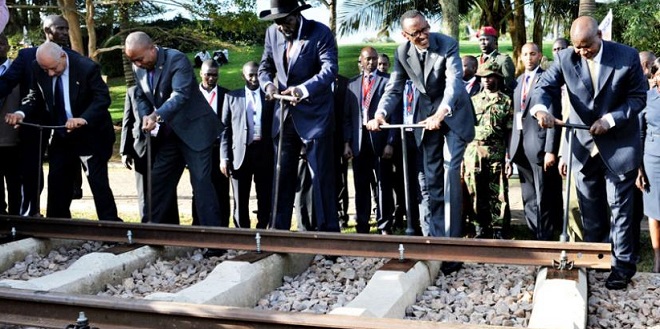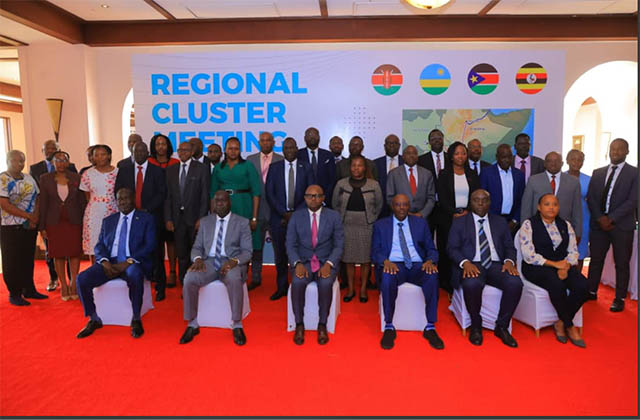
Kampala, Uganda | THE INDEPENDENT | Construction of Uganda’s leg of the Standard Gauge Railway (SGR) will finally start next month, eight years after its launch in Kampala by East African Presidents.
Uganda has signed a landmark $3bn (£2.3bn) contract with Turkish construction firm Yapi Merkezi to build a 272km section of railway, boosting regional trade and economic integration.
The deal, a priority for the Northern Corridor Integration Projects (NCIP) was signed in Kampala by Waiswa Bageya, the Permanent Secretary at the Ministry of Works and Transport and Yapı Merkezi Holdings Vice Chairman Erdem Arıoğlu.
Minister of Works and Transport, Gen. Edward Katumba Wamala, and Turkish Ambassador Fatih Ak were also among the officials present.
Uganda’s Standard Gauge Railway (SGR) project coordinator, Conon Perez Wamburu, said the agreement was for the first section of a planned 1,700 km electric rail line, and the segment would cost 2.7 billion euros.
Construction is set to begin in November and will take 48 months to complete,” Conon Wamburu said. Uganda will finance the project using its own funds and credit from export credit organizations.
Ambassador Richard Kabonero, the National Coordinator for the Northern Corridor Integration Projects (NCIPs), hailed the agreement as a crucial step towards regional cooperation and economic transformation.
“The SGR project requires private investment to unlock its full potential,” Ambassador Kabonero said. “This contract demonstrates the commitment to securing funding and leveraging private sector expertise.”
The SGR project aims to connect Uganda, Kenya, Rwanda, and South Sudan, reducing business costs and improving lives,” he added.

Neighboring Kenya is also extending the SGR from Naivasha to Malaba and Kisumu after transport minsters agreed to jointly mobilize resources to complete the remaining phase of the Mombasa-Nairobi-Naivasha-Kisumu-Malaba-Kampala SGR.
The ministers who held a meeting at Kenya’s coastal city of Mombasa said in a joint communique in May that by jointly securing additional financing, implementation of the final phase of the SGR will be fast-tracked.
The Northern Corridor Integration Projects comprise 14 clusters, covering various areas of cooperation among the four nations.
Amb. Kabonero, also MoFA’s head of department of Regional Economic Cooperation, stressed the importance of private sector involvement in the NCIPs.
Speaking at the regional cluster meeting of finance and private sector participation meeting under NCIPs, Amb. Kabonero noted that local companies participating in the EACOP project and suppliers providing materials are crucial examples of successful private sector engagement.
He said that the NCIP coordination efforts have already shown success in reducing call costs within the region under the One Network Area initiative.
This initiative aims to eliminate roaming charges, allowing citizens to make calls across member states without incurring additional costs.
Uganda’s Commissioner for Infrastructure and Social Services, Patrick Mwanja said SGR project seeks to revamp the existing railway network and construct a new line from Kenya’s port city of Mombasa to Kampala, Uganda, and onward to Kasese and Kigali in Rwanda.
“This project is crucial for regional connectivity and economic growth,” Commissioner Mwanja said. “We’re committed to making it a success.”
Uganda has made significant progress, establishing a Project Preparation Facility and approving the National Payment System Act.
The regional cluster meeting will discuss key issues, including regional payment systems, satellite projects, and cross-boundary projects to foster cooperation and economic growth among member states.
The NCIP has already achieved significant milestones, including the One Area Network (ONA) cross-border payment system and joint infrastructure projects.
 The Independent Uganda: You get the Truth we Pay the Price
The Independent Uganda: You get the Truth we Pay the Price


